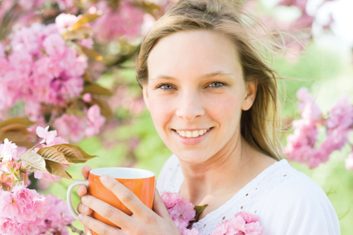
Herbal tea basics
When you grow a tea garden, the possibilities are endless. You can experiment with different combinations of herbs to make pure herbal blends, or mix them with your favourite black, green or white tea for added flavour. Before you get started, here are the basics of herbal tea making:
– Always clean your herbs before steeping or drying
– Keep your teapots and cups covered during brewing to hold in the steam and herb oils (that’s where all the goodness is!)
– The best time to harvest herbs is early in the morning after dew has dried, but before the sun is at its peak
– Consult your doctor before drinking new herbal teas. Some teas can be dangerous for pregnant women (including chamomile, bergamot and borage, for example) and some may react with other medications and treatments.
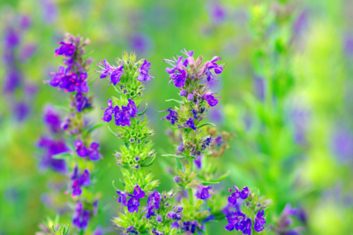
Anise-Hyssop
As its name suggests, this herb smells and tastes like licorice. Chopped leaves in salads, stews and sauces, as well as in tea, are believed to aid digestion and calm coughs.
Grow: Not only is anise-hyssop ideal for tea, but it will look nice in your garden, too. Plant it behind other herbs and flowers because it can grow to about 1 metre tall and you’ll want to see its pretty blue buds. It also produces lots of nectar, so it’s likely to attract bees, butterflies and, if you’re lucky, hummingbirds.
Drink: Both the leaves and flowers, dried, can be used in tea. Use about a teaspoon of dried anise-hyssop per cup of boiling water.
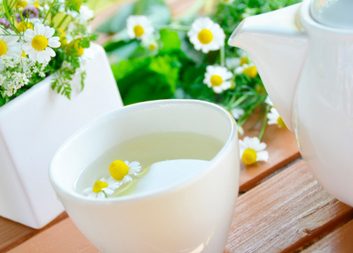
Chamomile
When it’s bedtime but your brain isn’t ready to settle down, turn to a hot cup of chamomile. It’s known for its ability to calm nerves and aid with insomnia.
Grow: Chamomile is an annual. It will produce pretty little flowers that look like small daisies, so it’s lovely planted among other flowers. Give it plenty of space to grow.
Drink: Tea is made from dried flowers, either crushed or whole. Steep in hot water for about five minutes (or longer, if you wish), strain and serve with honey or lemon.
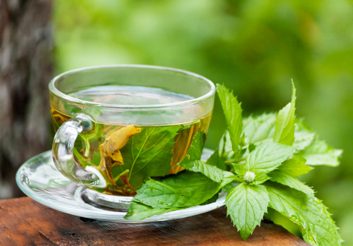
Mint
If you’re looking for a stimulating and refreshing drink without caffeine, mint is a great herbal choice. It is also used to quell stomach indigestion.
Grow: Mint is a low ground cover that anyone (even the blackest thumbs) can grow, however it is invasive, so be sure to grow it in a pot or other controlled area before it takes over your whole yard. It also comes in a range of varieties, from classics like spearmint or peppermint to chocolate mint, orange mint, ginger mint and grapefruit mint – so pick your favourites!
Drink: Mint makes a great hot or cold tea on its own or its leaves can be combined with other herbs, such as rosemary or lemon herbs like lemon balm, lemon basil, lemon thyme or lemon verbena.
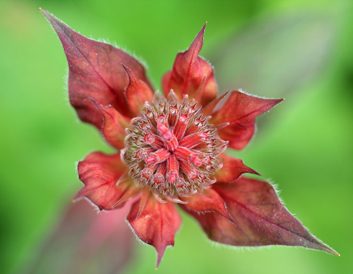
Bergamot
This herb, native to the United States, was traditionally used by the Oswego tribe of Native Americans to treat a long list of maladies. Tea made from its flowers is often called “Oswego tea” and may relieve indigestion, gas, PMS symptoms and fever. The flowers have a mild orange flavour (similar to the bergamot orange, which is what flavours Early Grey tea).
Grow: This plant will produce gorgeous bright flowers in pink, orange or red on tall stems (about a metre tall) that are likely to attract butterflies and hummingbirds. Bergamot will tolerate some shade but prefers full sun, like most herbs.
Drink: Dry bergamot leaves are delicious in hot or iced tea. Mix with black tea for an Earl Grey-like blend.
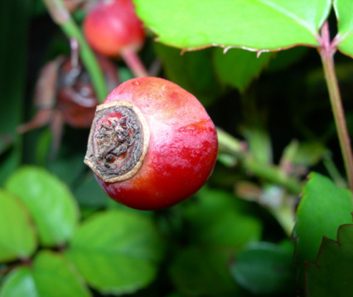
Rose Hips
Rose Hips are the round portion of a rose just below the flower. These “fruits” contain the seeds and are 20 times richer in vitamin C than oranges, although their vitamin content decreases quickly through drying, brewing, storing and so on. Regardless, rose hips may be beneficial in many of the same ways other vitamin C-rich foods are, and can boost your immune system.
Grow: Rose hips are more difficult to grow than other tea plants, but they are perennials, so if you take good care, they should come back year after year. You must leave roses on the plants to bloom so the hips will form – no snipping for bouquets!
Drink: Chop or crush fresh or dried rose hips for tea. After brewing, you’ll likely want to strain your tea before drinking because hips have small seeds and hairs inside.
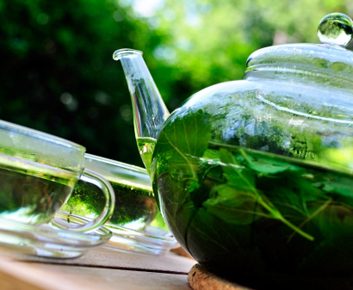
Lemon Balm
This fresh, lemony herb smells like the best summer desserts – but brewing up a cup of lemon balm tea is calorie-free! Not only that, it’s also believed to calm anxiety and insomnia, so if you’re feeling stressed at work, it might be the perfect evening antidote.
Grow: Lemon Balm is part of the same family as mint, so it also needs to be contained before it spreads. It’s a perennial, so if you plant it once, you can enjoy its tea for many seasons.
Drink: You can make great tea from fresh or dried lemon balm leaves. Steep to desired taste.
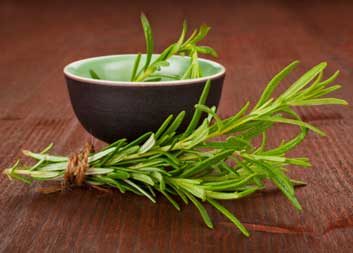
Rosemary
This kitchen-essential is as good in tea as it is in savoury dishes. Rosemary has been associated with memory and alertness, so it’s a great study buddy or desk drawer companion to get you through the afternoon slump at work. It also contains vitamins A, B, C and E.
Grow: Rosemary likes well-draining soil. It grows like a small bush on woody stems. When harvesting, snip off whole sections of stem, but only use the leaves.
Drink: Pop a whole sprig of rosemary into a pot to steep or crush some dried and place in a tea ball. Rosemary mixes well with other herbs for a custom blend.
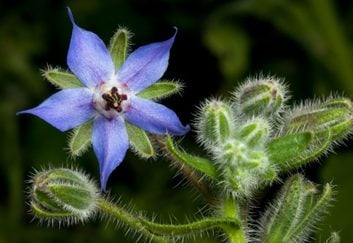
Borage
Known as the “herb of gladness,” borage can have an exhilarating effect. It may also have anti-inflammatory properties and has been used to soothe throat irritation, coughs and colds.
Grow: Prolific and easy to grow, borage likes full sun and will produce charming blue flowers. Consider wearing gloves to harvest borage to avoid irritation or scratches from the prickly hair that covers its leaves.
Drink: Mix honey, lemon and ice with borage leaves for a refreshing summer iced tea. Dried leaves and flowers can be used to brew hot tea (at least 3 teaspoons, to taste).
Related:
• The 5 best foods to grow at home
• How gardening heals
• Creating a low-allergen garden
